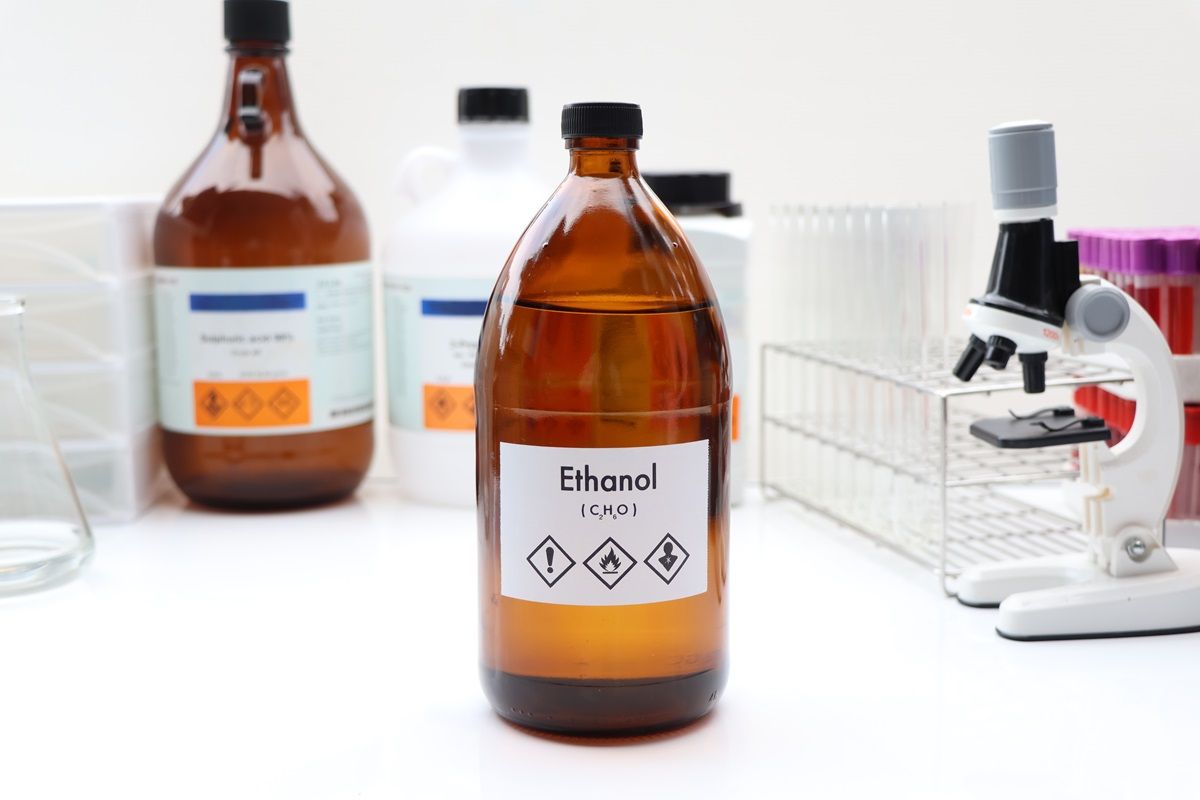In January 1920, Prohibition went into effect in the U.S. The 18th Amendment meant that it was illegal to manufacture, sell or transport ethanol for consumption. However, alcohol has many industrial uses, as solvents, cleaning fluids, and for manufacturing detergent and perfumes. To prevent people from consuming legal, industrial alcohol, the U.S. government ordered manufacturers to add ingredients, such as methanol, to make industrial alcohol toxic to humans. In other words, they denatured the alcohol.
The alcohol in alcoholic beverages is called ethanol or ethyl alcohol. Ethanol is produced naturally when sugars are fermented by yeast.
Denatured alcohol is still ethanol, but with added substances to make it unfit for human consumption. You’ll see denatured alcohol in products such as hand sanitizers, disinfectants, and household cleaning products. Methanol, also known as “wood alcohol, is a common additive to denature ethanol. It’s colorless and quite toxic, even in very small amounts.
Prohibition had disastrous effects on public health. It created a huge consumer market for alcohol and organized crime filled that vacuum. Quickly, supplies of whiskey distilled prior to Prohibition, were gone. Organized crime started using denatured, industrial alcohol, disguised as whiskey. The resulting “rotgut” was cheap…. and hazardous. A few bootleggers attempted to re-distil the denatured alcohol, but they didn’t always remove all the wood alcohol and seldom any other additive. Even ingesting a small amount of methanol attacks the nervous system, especially the optic nerve, causing blindness. By 1927, total deaths from adulterated liquor reached approximately 50,000, with many more cases of blindness and paralysis.
Prohibition ended late in 1933, but you can still find denatured alcohol in your local pharmacy. And you still mustn’t drink it.
Special thanks to the reviewers of this episode, Director of Education Claire White and Education Specialist Zach Jensen of the Mob Museum in Las Vegas.
Learn more
- Drinking And Smoking
- What do alcoholism and having a sweet tooth have in common?
- Why does rubbing alcohol feel cold?
Sources
Alcohol as Medicine and Poison, Prohibition: An Interactive History
Prohibition, Digital History ID 3383
What’s the Difference Between Isopropyl and Denatured Alcohol? Healthline










